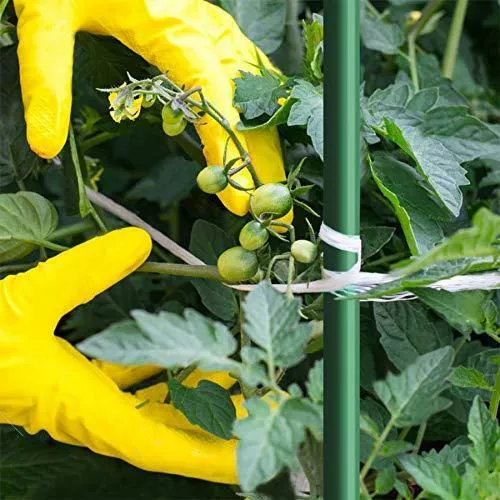Staking tomato plants is an essential practice for any gardener looking to grow healthy and productive tomato crops. Knowing the right time to stake your tomato plants can make a significant difference in their growth and yield. Here’s a comprehensive guide on when to stake your tomato plants and why it’s important.

when to stake your tomato plants
Why Stake Your Tomato Plants?
Staking tomato plants offers several benefits:
- Support: Tomato plants can grow tall and heavy with fruit. Staking provides the necessary support to keep the plants upright.
- Air Circulation: Proper staking ensures better air circulation around the plant, reducing the risk of diseases such as blight.
- Sun Exposure: By keeping the plants upright, staking allows for better sun exposure, which is crucial for fruit ripening.
- Ease of Harvesting: Staked plants make it easier to see and pick ripe tomatoes, reducing the chances of missing any fruits.
When to Stake Your Tomato Plants
The best time to stake your tomato plants is as soon as you transplant them into your garden. Here’s a step-by-step timeline to help you get it right:
- Transplanting Stage: Right after you transplant your tomato seedlings into the garden, place your fiberglass plant stakes. This early intervention prevents root damage and ensures that the plant grows around the support rather than having to be tied later.
- Seedling Stage: If you started your tomatoes from seeds indoors, you can stake them when they reach about 6-10 inches tall. This is typically 2-3 weeks after they have sprouted and have developed a few sets of leaves.
- Early Growth: For those who buy young plants from a nursery, stake them immediately after planting. This is usually when the plants are about 6-12 inches tall. Early staking helps to guide the plant’s growth and prevents any damage from having to insert stakes later.
How to Stake Your Tomato Plants
- Choose the Right Stakes: Use sturdy materials such as wooden stakes, bamboo poles, or fiberglass plant stakes that are at least 5-7 feet tall. The height ensures that the stakes can support the plant throughout its growing season.
- Proper Placement: Place the stake about 2-3 inches away from the main stem of the plant. Be careful not to damage the roots when inserting the stake into the soil.
- Tying the Plants: Use soft, flexible ties like garden twine, cloth strips, or tomato ties to gently secure the plant to the stake. Tie the plant loosely to avoid constricting its growth. Start tying the plant when it’s about 12-18 inches tall and continue to tie it every 6-8 inches of growth.
Additional Tips
- Prune Regularly: Regularly prune the suckers (the small shoots that grow between the main stem and the branches) to keep the plant’s energy focused on producing fruit.
- Monitor Growth: Keep an eye on the plants and adjust the ties as needed to accommodate growth.
- Mulch: Applying mulch around the base of your tomato plants helps retain moisture and suppress weeds.
By staking your tomato plants at the right time and following these tips, you can ensure healthy growth and a bountiful harvest. Happy gardening!
By implementing these practices and following the timeline, your tomato plants will have the support they need to thrive, resulting in a more productive and enjoyable gardening experience.
 info@unicomposite.com
info@unicomposite.com


























